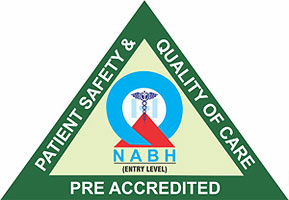+91-7291089674 (Bandra)
+91-7291092120 (Kandivali)




April 24, 2021 | Author: Admin
Overview
Diabetes is considered a metabolic disease. In diabetes, there is an interference in the sugar metabolism. The body may not produce sufficient insulin or cannot use insulin properly. Insulin is a hormone used to break sugar into glucose and provide energy to the body.
An insufficient amount of insulin results in an increase of glucose levels in the blood and causes hyperglycemia. Hyperglycemia hurts various parts of the body, including the eyes. If the blood sugar level of the body becomes low, it may lead to dizziness and dim vision. The condition is opposite to hyperglycemia and is known as hypoglycemia.
Blurry vision can be the first sign of eye damage due to diabetes. The patient should visit the doctor for an ocular checkup.
Diabetes and eye damage
Diabetes may cause various eye diseases, such as cataracts, optic nerve disease, glaucoma, and diabetic retinopathy.
The formation of a cloudy layer occurs within the lens of the eye. You should consult with your ophthalmologist for an eye evaluation. A cataract may lead to blurry vision. People with diabetes are more susceptible to cataracts. Other symptoms of cataract include:
An increase in fluid pressure within the eyes is responsible for damaging the optic nerve and developing glaucoma. The risk of developing glaucoma is twice in a diabetes patient than a healthy person. Symptom may include:
The swelling of the centre of the retina (macula) that gives sharp vision is known as macular oedema. Swelling may lead to leakage of fluid and may be due to diabetic retinopathy. Symptoms of macular oedema are change in colour vision and wavy vision.
Diabetic retinopathy is a condition that may be associated with loss of vision and blindness in people with diabetes. It happens due to damage to the light-sensitive layer of the retina. Either people who have type 1 or type 2 both are susceptible to develop diabetic retinopathy.
The symptoms of diabetic retinopathy might not appear in the early stage. The appearance of symptoms takes place with the progression of the disease. The symptoms may include:
Factors that may increase the risk of eye diseases are:
Diabetic retinopathy can lead to other serious eye problems. Problems associated with diabetic retinopathy are:
Diabetic macular oedema (DME) –
People with diabetic retinopathy have a high risk of developing DME. It happens due to the swelling of the macula and leakage of fluid. It may lead to blurry vision.
Neovascular glaucoma – Diabetic retinopathy can cause the development of abnormal blood vessels from the retina into the angle of anterior chamber of the eye. It blocks the fluid to drain out from the eyes.
Retinal detachment – Diabetic retinopathy can cause the formation of scars in the back of the eye. The pulling of the retina from its base is called tractional retinal detachment.
How to protect your vision when you have diabetes.
There is no perfect method to prevent diabetic retinopathy. However, several measures may help you to reduce the risk of this condition. These are:
• Regular physical activity may help in reducing the risk of diabetic retinopathy.
• Incorporating healthy eating habits into your routine life
• By taking oral medications or insulin injections for diabetes to control blood sugar
• Frequently monitoring the blood sugar level.
• Control the blood sugar level and cholesterol level
• By reducing intake of tobacco or quit smoking
• By contacting your doctor when experiencing sudden changes in vision
Conclusion
The risk of eye disease increases when you are a diabetic patient. A comprehensive examination of the eye at regular intervals is necessary to keep your eyes healthy. Regular eye checkups help in preventing complications related to diabetic eye disease. It also helps in the early diagnosis and management of the disease. In some cases, treatment can prevent you from a progressive damage to the eye. The use of eye drops and other medications also help in the treatment along with laser and retinal and cataract surgeries.